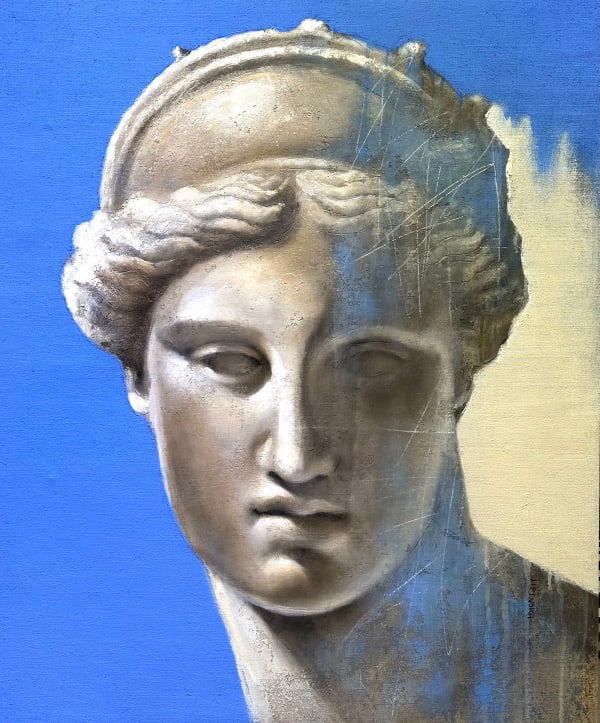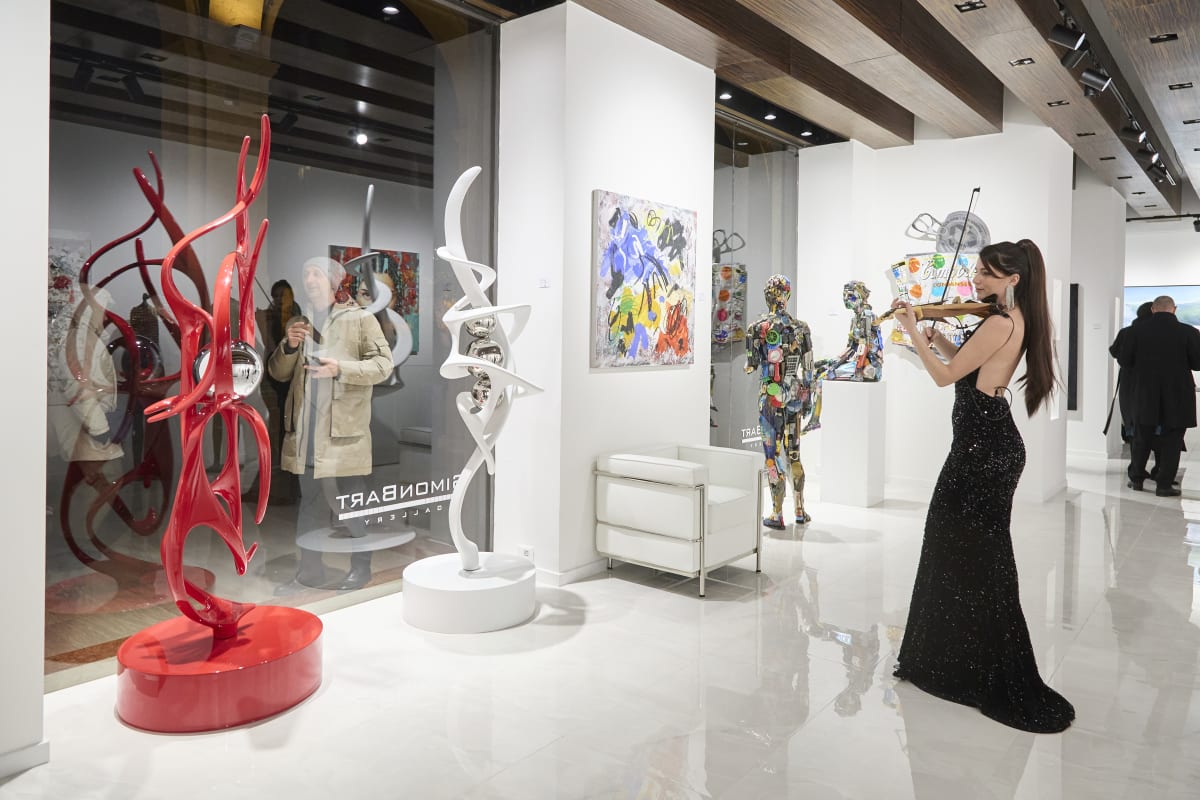Margherita Lipinska Poland, b. 1964
Works
 Margherita LipinskaAres, 2024Acrylic on brocade canvas157 x 136 cm
Margherita LipinskaAres, 2024Acrylic on brocade canvas157 x 136 cm Margherita LipinskaDea Fortuna, 2024Acrylic on brocade canvas157 x 136 cm
Margherita LipinskaDea Fortuna, 2024Acrylic on brocade canvas157 x 136 cm Margherita LipinskaHermes, 2023Acrylic on brocade canvas187 x 140 cm
Margherita LipinskaHermes, 2023Acrylic on brocade canvas187 x 140 cm Margherita LipinskaMedusa, 2023Acrylic on jute canvas100 x 125 cm
Margherita LipinskaMedusa, 2023Acrylic on jute canvas100 x 125 cm Margherita LipinskaAntinoo, 2023Acrylic on velvet canvas143 x 150 cm
Margherita LipinskaAntinoo, 2023Acrylic on velvet canvas143 x 150 cm Margherita LipinskaMinerva, 2022Acrylic on jute canvas142 x 126 cm
Margherita LipinskaMinerva, 2022Acrylic on jute canvas142 x 126 cm Margherita LipinskaMedusa, 2022Acrylic on brocade canvas140 x 146 cm
Margherita LipinskaMedusa, 2022Acrylic on brocade canvas140 x 146 cm Margherita LipinskaCavalli di Tarquinia, 2020Acrylic on velvet canvas156 x 136 cm
Margherita LipinskaCavalli di Tarquinia, 2020Acrylic on velvet canvas156 x 136 cm Margherita LipinskaUlisse, 2022Acrylic on canvas123 x 95 cm
Margherita LipinskaUlisse, 2022Acrylic on canvas123 x 95 cm Margherita LipinskaVenere di Capua, 2022Acrylic on canvas113 x 95 cm
Margherita LipinskaVenere di Capua, 2022Acrylic on canvas113 x 95 cm Margherita LipinskaMinerva, 2022Acrylic on brocade canvas142 x 126 cm
Margherita LipinskaMinerva, 2022Acrylic on brocade canvas142 x 126 cm Margherita LipinskaAchille, 2022Acrylic on velvet canvas144 x 118 cm
Margherita LipinskaAchille, 2022Acrylic on velvet canvas144 x 118 cm Margherita LipinskaDomus Aurea "Pantheon", 2022Acrylic on velvet canvas158 x 130 cm
Margherita LipinskaDomus Aurea "Pantheon", 2022Acrylic on velvet canvas158 x 130 cm Margherita LipinskaUlisse, 2020Acrylic on velvet canvas136 x 100 cm
Margherita LipinskaUlisse, 2020Acrylic on velvet canvas136 x 100 cm
Biography
Margherita Lipinska was born in 1964 in Poland, in 1989 she graduated in Painting at the Academy of Fine Arts in Gdansk.
In 1991-92 she continued her studies in Rome having obtained a scholarship at the La Sapienza University.
Since 1991 she has lived in Rome where she carries out her artistic activity.
In 1991-92 she continued her studies in Rome having obtained a scholarship at the La Sapienza University.
Since 1991 she has lived in Rome where she carries out her artistic activity.
The artist defines her painting as an investigation into time and a way to relate to the present in the awareness of the belonging of occidental culture to the Greco-Roman roots.
Ancient art and myth create a reassuring ground where the artist can carry out her artistic research in the face of a present full of uncertainties.
Through the use of unusual supports such as velvet, jute, recycled cardboard and bright colors Lipinska creates a contamination that overlaps the classic images. Large formats and soft canvases, sometimes without frames, give a fresh and informal look to the images represented which are often well-known representations of famous sculptures.
In this way the ancient object is desecrated but without destroying its beauty and its perfection, the sculptures portrayed become contemporary and represent none other than ourselves. The use of famous images, already familiar to the viewer, creates a common language facilitating the beginning of dialogue.
In her work she want to give voice to the amazing topicality of ancient history and art. She believes that our contemporaneity would be much poorer if we did not continue to confront ourselves with the classical era.
Ancient art and myth create a reassuring ground where the artist can carry out her artistic research in the face of a present full of uncertainties.
Through the use of unusual supports such as velvet, jute, recycled cardboard and bright colors Lipinska creates a contamination that overlaps the classic images. Large formats and soft canvases, sometimes without frames, give a fresh and informal look to the images represented which are often well-known representations of famous sculptures.
In this way the ancient object is desecrated but without destroying its beauty and its perfection, the sculptures portrayed become contemporary and represent none other than ourselves. The use of famous images, already familiar to the viewer, creates a common language facilitating the beginning of dialogue.
In her work she want to give voice to the amazing topicality of ancient history and art. She believes that our contemporaneity would be much poorer if we did not continue to confront ourselves with the classical era.
Exhibitions
Events
Join our mailing list
* denotes required fields
We will process the personal data you have supplied to communicate with you in accordance with our Privacy Policy. You can unsubscribe or change your preferences at any time by clicking the link in our emails.


















